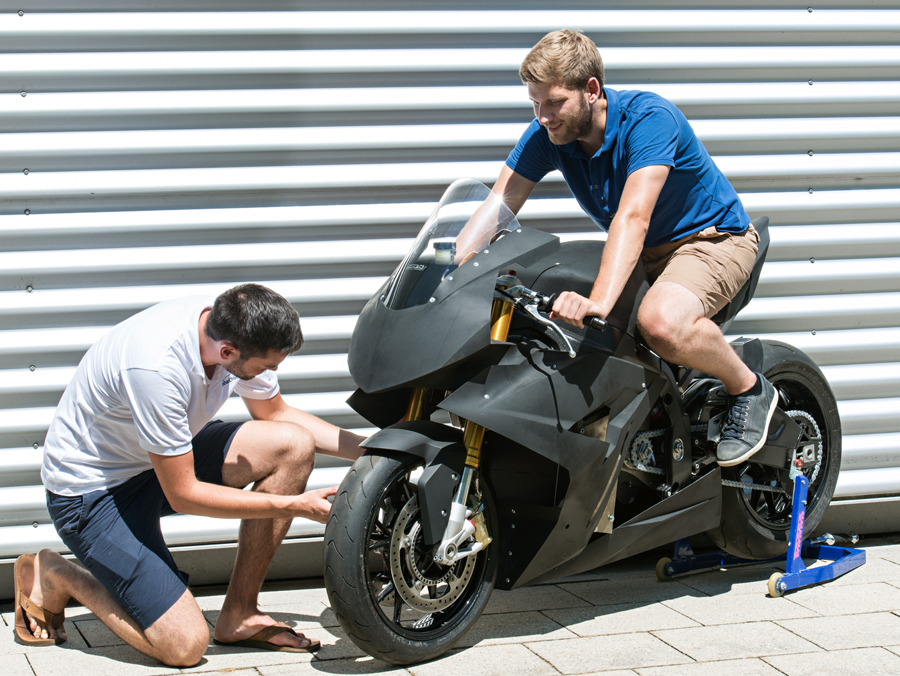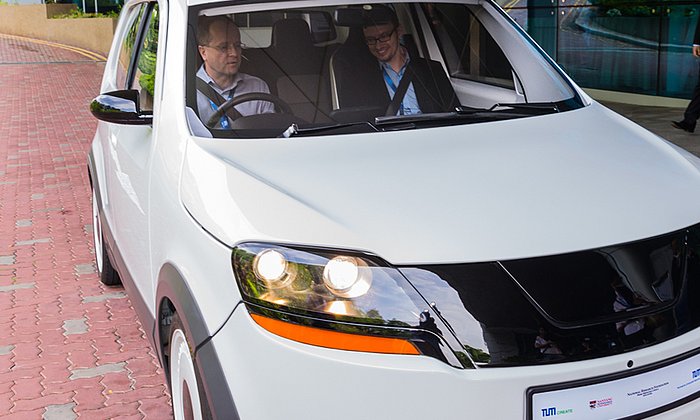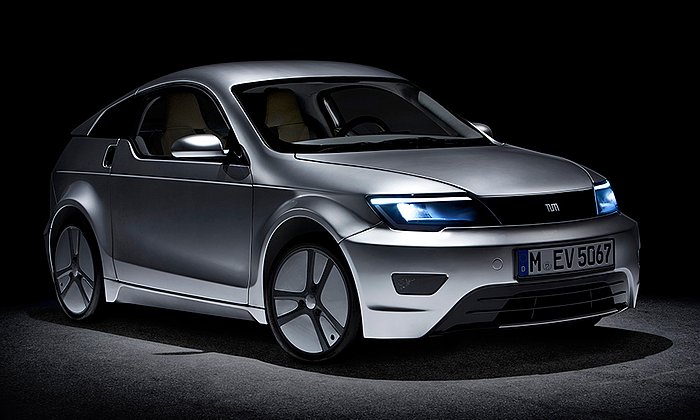globalDrive: Students develop electric racing motorcycle
Motor runs backwards on "T0RR"

The black motorcycle with its arrow-shaped front evokes the impression it cannot wait to finally run its laps on the racetrack. The electric motorbike "T0RR" embodies three quarters of a year of hard work and tinkering. The team presented the prototype at the final event of the globalDrive program at the Institute of Automotive Engineering. Four German and four Chinese students had removed the transmission, clutch, engine and electronics from a BMW S1000RR and retrofitted it with an electric drive. With its 136 horsepower motor, the motorcycle achieves a top speed of over 250 kilometers per hour.
The goal of the team was to develop an electric racing motorcycle and to compete in the semi-professional Pro Thunder Race in Ochsersleben, explains the project leader, Dr. Frank Diermeyer. The students hope to secure the pole position during qualifying – leaving behind all conventional gasoline-driven motorcycles.
Instantaneous full power
To achieve this goal, TORR must pack a lot of power – ideally at the press of a button. The team assembled a battery pack made of high-performance cells that can be quickly discharged when required. In other words, the stored energy must be immediately available. "That is important for obtaining the large acceleration and high top speed required in Ochsersleben," explains Diermeyer.
When drivers lean into the curves during the race the motorcycle should react as dynamically as possible. An overly large rotational moment of inertia can hinder this. Phillip Wacker, the project supervisor, illustrates the principle of the moment of inertia using a bicycle. The bike will not stand upright on its own, but rather falls over. It is only the mass of the wheels turning in one direction that stabilizes the bike. The greater the rotating mass, the more stable the bike – but also the more difficult to steer into a curve.
Motor running in reverse
The students employed a trick: They installed the engine backwards, i.e. so it runs the direction opposite to that of the wheels. The mass rotating in the same direction is thus reduced – and with it, of course, the rotational moment of inertia. "The backwards running motor makes the dynamics even better that in a conventional motorcycle," says Wacker. In contrast to a combustion engine, the rotational direction of an electric motor is relatively easy to reverse.
Effective motor brake
Electric drive systems provide other advantages, too: So-called recuperation brakes are extremely effective since the motor also functions as generator. This works using the principle of a dynamo, which converts the kinetic energy of the motorcycle into electrical energy. The resulting resistance in the wheel results in a braking effect. No mechanical brake is required on the back wheel – which saves weight. The recuperated energy can be partially fed back into the battery.
A further positive point: The torque of the electric motor reaches its maximum instantaneously. In the "TORR" that is 240 newton meters. The responsiveness of the motor guarantees tremendous acceleration.
The range is still limited by the battery. This means a complete race cannot be run on a single battery. The students nonetheless hope for good results during qualifying – and in that way hope to attract further supporters to help continue development of the motorcycle.
About global drive:
The globalDrive program at the Institute of Automotive Engineering was initiated in 2008. Four students at the institute work together with four students from other countries on automotive projects. Prototypes are developed in collaboration with the automotive industry over a period of three quarters of a year. BMW MOTORRAD and R&R Fahrzeugtechnik supported the students in the development of the T0RR motorcycle. Following students participated in the project: Lukas Wheldon, Christian Sander, Cumhur Öztürk, Marine Ilg, Zhou Keyuan, Geng Shuochen, Zhang Xinlong, Wang Xu and Xiong Hao (project supervisor).
Download photos in high resolution: https://mediatum.ub.tum.de/?id=1273371#1273371
Contact:
Dipl.-Ing. Philip Wacker
Technical University of Munich
Tel: +49.89.289.10495
wacker@ftm.mw.tum.de
www.ftm.mw.tum.de
Dr. Frank Diermeyer
Technical University of Munich
Tel: + 49.89.289.15349
diermeyer@ftm.mw.tum.de
www.ftm.mw.tum.de
Further links:
Technical University of Munich
Corporate Communications Center
- Stefanie Reiffert
- reiffert@zv.tum.de
- presse@tum.de
- Teamwebsite

